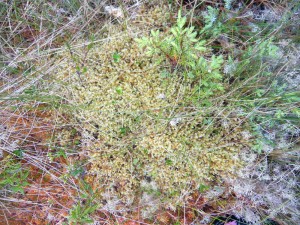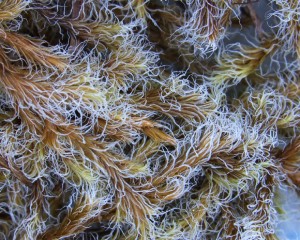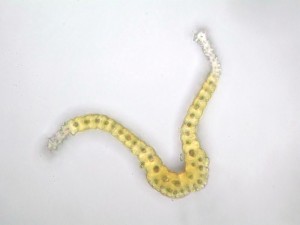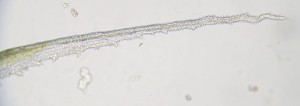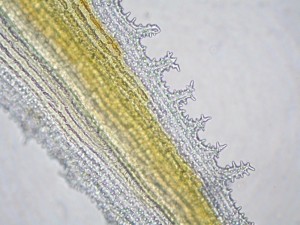Habitat
Racomitrium lanuginosum is most commonly found on exposed rock surfaces and boulders. Patches of this species can also be seen growing with Racomitrium elongatum on gravel on the roof of the UBC Biological Sciences Building.
In the photo to the left, R. lanuginosum is growing in a bog.
Gametophyte
Overall Structure:
Racomitrium lanuginosum is an acrocarpous moss that grows in hoary grayish-green to whitish-green mats.
Shoots are irregulary-pinnately branched. The conspicuous, whitish awns are rather flexuouse when dry.
Leaf Structure:
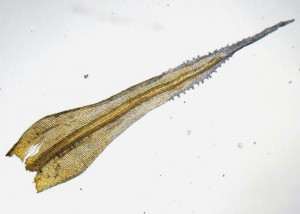 The leaves are a linear-lanceolate shape. The presence of a broadly decurrent, hyaline awn with strongly dentate margins makes recognition of this species relatively straightforward.
The leaves are a linear-lanceolate shape. The presence of a broadly decurrent, hyaline awn with strongly dentate margins makes recognition of this species relatively straightforward.
A cross-section of the distal part of a leaf reveals that sharp papillae are confined to the hyaline marginal areas which correspond to the decurrent strips of the awn. Also note that the lamina is wholly unistratose while the costa is bistratose.
The costa extends beyond the leaf apex into the awn.
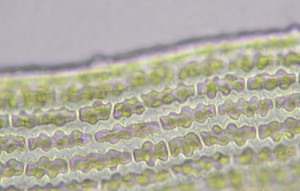 The leaf cells are variously short-rectangular to elongate, with thick, sinuose walls.
The leaf cells are variously short-rectangular to elongate, with thick, sinuose walls.
The hyaline awn is decurrent, with sharp papillae and large, multicellular teeth.
Sporophyte
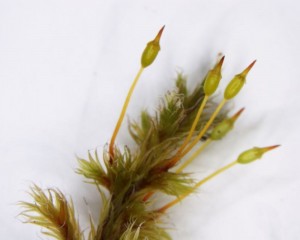 Overall, sporophytes are uncommon but may be abundant in coastal areas.
Overall, sporophytes are uncommon but may be abundant in coastal areas.
Sporangium:
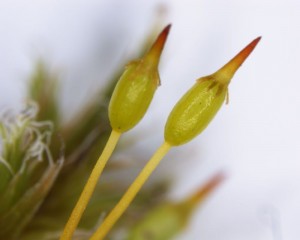 Young sporangia are capped by mitrate calyptrae. Note the fringe of lobes radiating from the calyptrae bases.
Young sporangia are capped by mitrate calyptrae. Note the fringe of lobes radiating from the calyptrae bases.
 right: a young sporangium minus calyptra
right: a young sporangium minus calyptra
 left: an old sporangium that has lost its operculum
left: an old sporangium that has lost its operculum
Seta:
The seta is twisted near the base of the sporangium. It moves hygroscopically to aid with spore dispersal.

